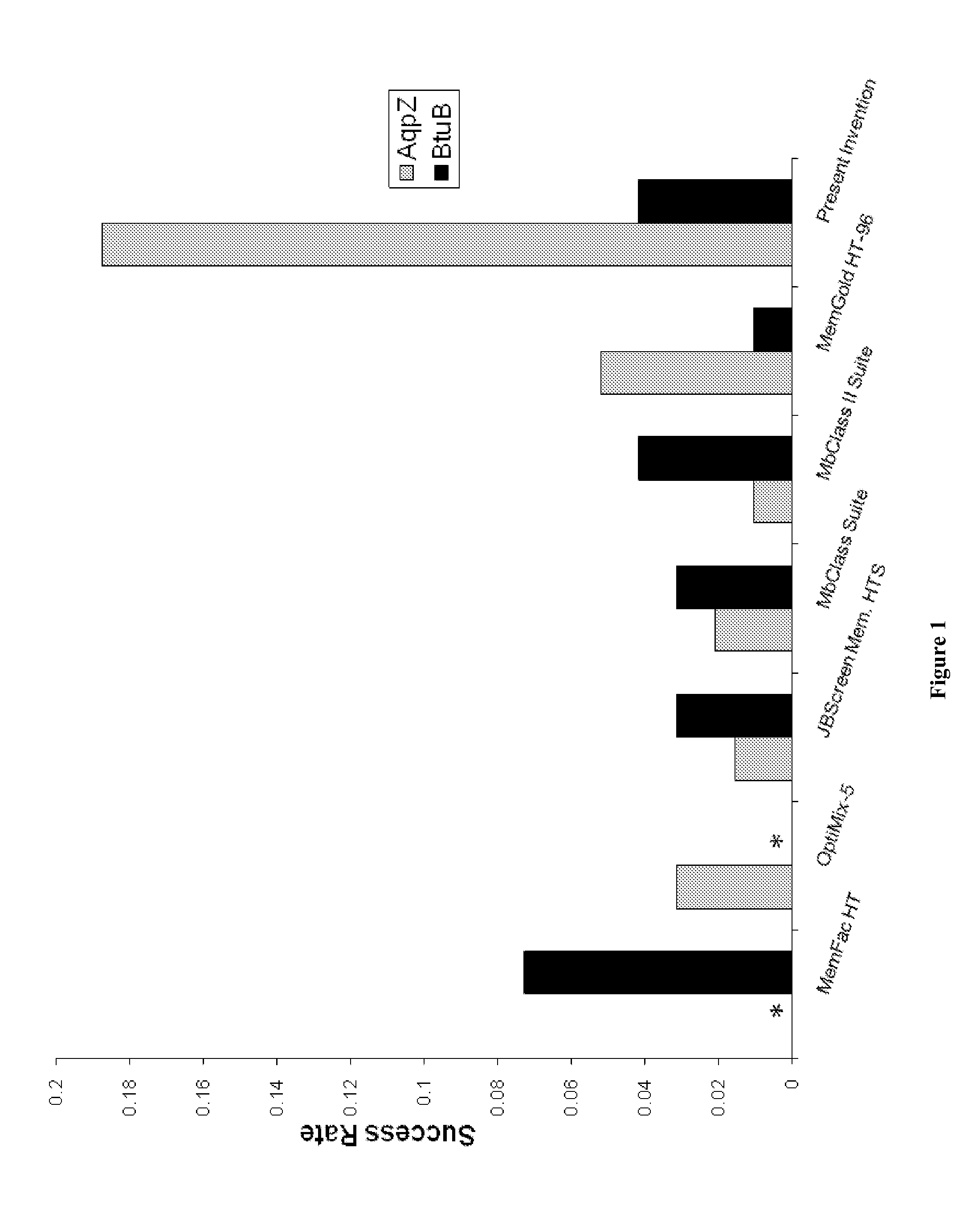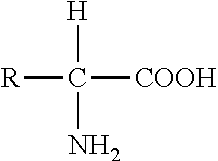Compositions and methods for a membrane protein crystallization screening kit
a membrane protein and screening kit technology, applied in library screening, other chemical processes, separation processes, etc., can solve the problems of increasing the mass limit of nmr, unable to solve the structure by nmr, so as to reduce the number of crystallization experiments and achieve optimal protein concentration
- Summary
- Abstract
- Description
- Claims
- Application Information
AI Technical Summary
Benefits of technology
Problems solved by technology
Method used
Image
Examples
embodiments
[0064]In one embodiment, the present invention comprises a 96-solution crystallization screen and a 24-condition solubility screen. In one aspect, the compositions and methods of the invention are useful for the crystallization of purified membrane proteins. However, the utility of the invention is not limited to crystallization of membrane proteins. The crystallization screen and solubility screen may be useful in the crystallization of other classes of macromolecules, including soluble proteins, nucleic acids, and complexes comprised of any combination of macromolecules.
[0065]In one embodiment, the present invention provides a method for identifying a formulation useful for determining the solubility of a protein, comprising contacting samples of a protein in at least one solubility formulation of the invention.
[0066]In one embodiment, the present invention provides a method for identifying a formulation useful for crystallizing a protein.
[0067]In one embodiment, the present inven...
examples
[0080]The solutions of the solubility screen and crystallization screen were prepared from stock solutions and Milli-Q (Millipore, Bellerica, Mass.) water using a Multiprobe HT fluid handling robot (PerkinElmer, Waltham, Mass.). 1.5 mL of each solution was prepared in a ninety-six well polypropylene plate (Fisher Scientific, Waltham, Mass.). In the case of the solubility screen, the screen was dispensed in quadruplicate, with each instance of the screen occupying two twelve well rows.
[0081]The E. coli water channel, Aquaporin Z (AqpZ), is an alpha helical plasma membrane protein. The protomer possesses six transmembrane alpha helices and two helices that span approximately half of the membrane. AqpZ was expressed and purified as described previously [4] with the following modifications. Cobalt resin was used for immobilized metal affinity chromatography (IMAC) purification. The polyhistidine tag was removed using an immobilized trypsin column. Subtractive IMAC and gel filtration pur...
PUM
| Property | Measurement | Unit |
|---|---|---|
| pH | aaaaa | aaaaa |
| pH | aaaaa | aaaaa |
| pH | aaaaa | aaaaa |
Abstract
Description
Claims
Application Information
 Login to View More
Login to View More - Generate Ideas
- Intellectual Property
- Life Sciences
- Materials
- Tech Scout
- Unparalleled Data Quality
- Higher Quality Content
- 60% Fewer Hallucinations
Browse by: Latest US Patents, China's latest patents, Technical Efficacy Thesaurus, Application Domain, Technology Topic, Popular Technical Reports.
© 2025 PatSnap. All rights reserved.Legal|Privacy policy|Modern Slavery Act Transparency Statement|Sitemap|About US| Contact US: help@patsnap.com


